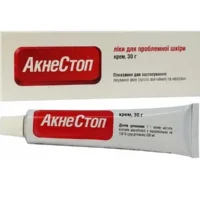Description
Pemozar (Esomeprazole) Gastroresistive Tablets 20 mg. №14
Ingredients:
- Each tablet contains 20 mg of esomeprazole.
Dosage:
- The recommended dosage is one tablet daily, swallowed whole with water, preferably before a meal.
Indications:
- Pemozar tablets are indicated for the treatment of gastroesophageal reflux disease (GERD), erosive esophagitis, and gastric ulcers caused by Helicobacter pylori infection.
Contraindications:
- Do not use Pemozar if you are allergic to esomeprazole or similar medications.
Directions:
- Take Pemozar exactly as prescribed by your healthcare provider. Do not exceed the recommended dosage.
Scientific Evidence:
- Studies have shown that esomeprazole, the active ingredient in Pemozar, is effective in reducing gastric acid secretion and promoting healing of acid-related damage to the esophagus and stomach lining.
Additional Information:
- It is important to inform your doctor about any other medications you are taking before starting Pemozar to avoid potential drug interactions.
Mechanism of Action:
- Esomeprazole, the main component of Pemozar, belongs to a class of medications known as proton pump inhibitors (PPIs). PPIs work by irreversibly blocking the hydrogen/potassium adenosine triphosphatase enzyme system (the proton pump) of the gastric parietal cells, thus reducing acid secretion in the stomach.
Comparative Efficacy:
- Clinical trials have demonstrated the superior efficacy of esomeprazole in maintaining healing of erosive esophagitis and providing symptom relief compared to other PPIs like omeprazole. The delayed-release formulation of Pemozar ensures targeted delivery of the medication to the intestines where it is most effective.





